PC Plus HelpDesk - issue 267
 |
This month, Paul Grosse gives you more
insight into some of the topics dealt with in HelpDesk.
|
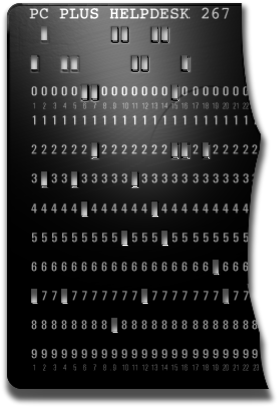 |
HelpDesk
|
|
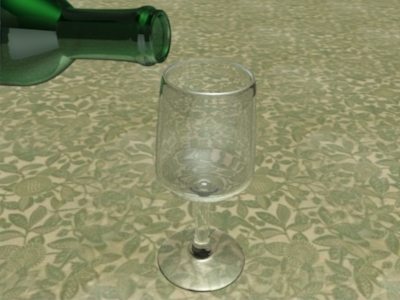 The program is quite easy to use and there
are plenty of tutorials on the Internet showing you
various ways of achieving what you want to get out of the
program The program is quite easy to use and there
are plenty of tutorials on the Internet showing you
various ways of achieving what you want to get out of the
programThe image on the right is one that I made earlier - my first go with Blender. The glass is just a cylinder that has been extruded and the bottle is similar, except that it is green. To make the glass, just create a cylinder, select one end and then press 'E' to extrude (makes an extra set of vertices between the highlighted vertices and their unhighlighted neighbours) and then pull them to where you want the next set to be, click to place them there, then press 'S' to scale/size them and change the diameter. Repeating these steps allow you to elongate and then
expand/constrict the cylinder until it has the shape of
the glass or the bottle. |
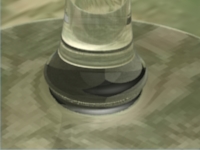 You can zoom in and render by altering the
focal length of the camera. You can zoom in and render by altering the
focal length of the camera.Here, I have done this to
show you how it renders the base of the glass (showing
the detail of how the base of the stem is flared) ... |
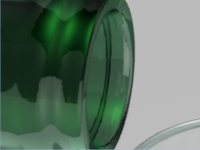 ... and here, how it renders the mouth of
the bottle (showing the transparency of the green glass
and how it thickens away from the rim of the bottle
mouth). ... and here, how it renders the mouth of
the bottle (showing the transparency of the green glass
and how it thickens away from the rim of the bottle
mouth). |
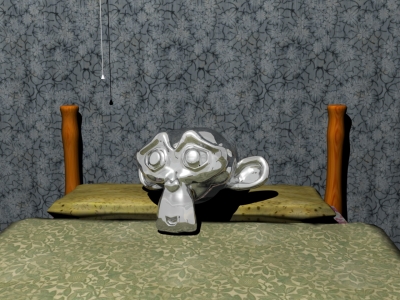 The image on the right is one that my son
(he's in his mid-teens) threw together in about half an
hour. The image on the right is one that my son
(he's in his mid-teens) threw together in about half an
hour. |
Well beyond 3D text
If you look at http://blenderartists.org/ , click on 'Features and Gallery', then on 'Gallery' and have a good look around, you will get some idea of just what can be achieved with the program. There is, of course the option of using the program to
produce films - from short, concept demonstration films,
through music videos to full length films if you have
enough time and money to throw at a project. |
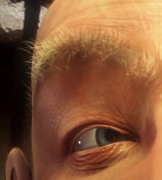 Open source films with Blender include
(amongst many) The Elephant's Dream ( http://orange.blender.org/
), which is a free download for you to see, and the
current project is Peach ( http://peach.blender.org/
). If you look at http://www.blender.org/features-gallery/movies/
you can see for yourself a number of short films that
various people have produced in a number of different
video formats. Open source films with Blender include
(amongst many) The Elephant's Dream ( http://orange.blender.org/
), which is a free download for you to see, and the
current project is Peach ( http://peach.blender.org/
). If you look at http://www.blender.org/features-gallery/movies/
you can see for yourself a number of short films that
various people have produced in a number of different
video formats.On the right, you can see the detail
from the image above, showing you hair rendering in
Blender. |
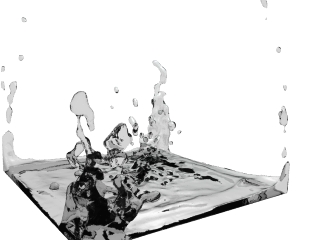 You can, of course, have a go yourself and
on the right is a still from a fluid simulation that is
fairly easy to recreate. You can, of course, have a go yourself and
on the right is a still from a fluid simulation that is
fairly easy to recreate.There are plenty of video tutorials on the Internet on YouTube, Google Video and so on so that you can see how to produce videos of fluids like the one on the right, hair, smoke, flames and so on. |
|
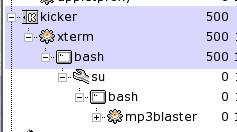 Process tree
Process tree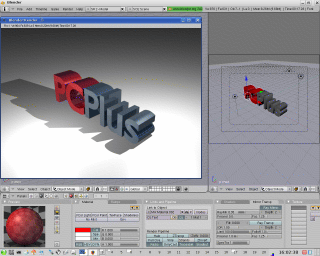 3D modelling software
3D modelling software Three
dimensional graphics programs usually end up doing
internal combustion engine parts or the odd building but
with a good rendering engine, decent modelling and
lighting, there is no reason why you shouldn't go the
whole hog and produce advanced still images or even your
own film. This is what has happened with Blender.
Three
dimensional graphics programs usually end up doing
internal combustion engine parts or the odd building but
with a good rendering engine, decent modelling and
lighting, there is no reason why you shouldn't go the
whole hog and produce advanced still images or even your
own film. This is what has happened with Blender.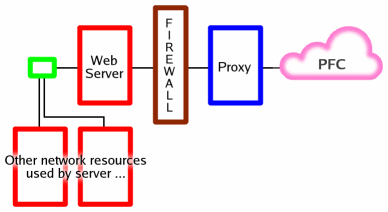 Reverse proxy server
Reverse proxy server